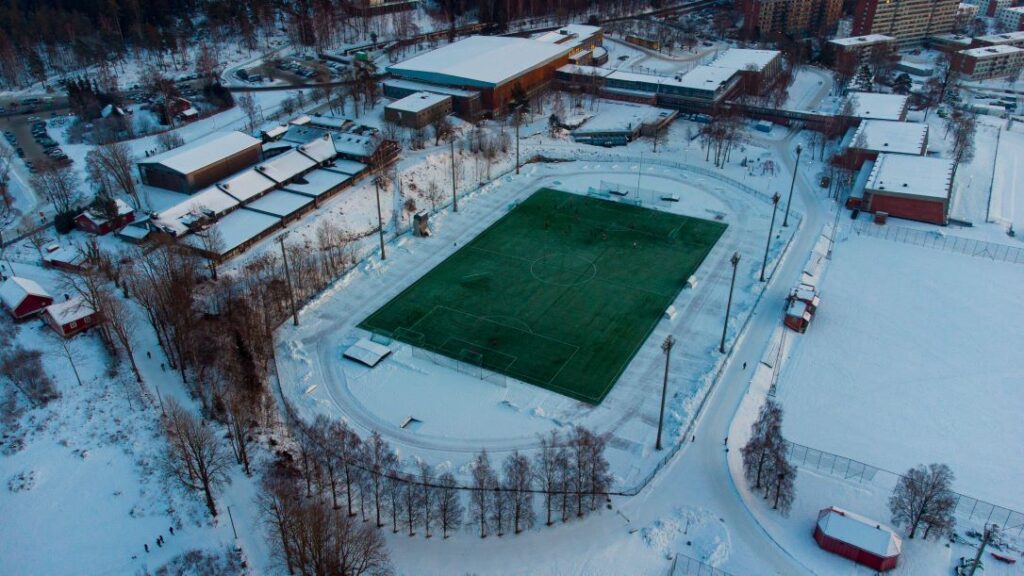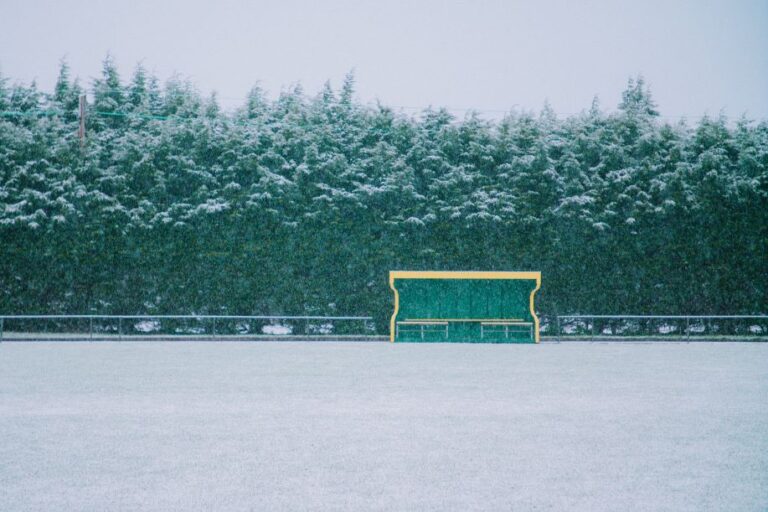By Mary Helen Sprecher
Students have returned to school, leaves are falling and, depending on where you are, homecoming might be in the rear-view mirror – all of which means, if you work in a four-season climate, you’ll have to get your field ready for winter.
And you know what? Even if you work in a climate where sports run all year long, it never hurts to have your fields receive a little extra care as the seasons change from football to field hockey to lacrosse. Here are some best practices for winterizing fields – or just from moving them seamlessly from season to season. After all, even in warm climates, sometimes resting fields between sports is needed.
“Often, the coaching staffs and the ADs run their programs from a calendar, and there is no room for any field recovery in the schedule,” said Mike Munie of Perfect Playfields and Links.
Natural grass fields
In parts of the country with severe winters, grass goes dormant by the middle of October, while areas slightly southward could see dormancy in November. Winterizing work that begins in the fall will serve two purposes: It can help protect the fields from winter damage and make the fields ready for use earlier in the spring.
For cool-season grasses, early fall fertilization allows the grass plants to store carbohydrates to tide them over winter and spur new growth in the spring. Expect to see wear in high-traffic areas of the field, so put in the time now to ensure the rootzone and grass will be ready for the spring season.
The fields will have become compacted through use during the season. Healthy grass will continue to grow, but to survive and thrive over winter, core aeration (or, alternatively, slice aeration) will bring in much-needed oxygen. Dethatching the field should follow. Depending upon the location of the field and the landscaping nearby, trenching around the perimeter can cut down on grass migration during the off-season.
“The more water contained in the plant system, the more damage that can happen in the winter,” said Munie. “Do a preventive application of fungicide for spring dead spot, if your fields are susceptible to that disease.”
In warm-season areas, field managers can overseed with perennial ryegrass to provide winter color and help protect bermudagrass from wear over winter. Treat stress areas with additional seed. In cool-season areas, dormant seeding of the normal turfgrass variety should follow dethatching. Topdress after seeding if the budget permits.
Consider the use of a growth blanket to encourage germination (in warm-season areas for winter cover and in cool-season areas for earlier growth in the spring). Growth blankets are made of lightweight, non-woven geotextiles placed over seeded areas and anchored at the perimeter. They allow sunlight to reach the soil during germination or over winter, raising soil temperatures from 5°F to 15°F, promoting rapid seed germination or post-winter recovery. Remember that as long as the grass continues to grow, the turf will need irrigation. Turf managers must regularly check under the blankets to ensure no mold or disease develops. (Alternately, a protective cover of weed-free straw or other material may be applied).
“In areas of hard freeze, winterize the irrigation system,” added Munie.
To make sure irrigation is winter-ready, check each of the system components and make any necessary repairs so that sprinklers, pipe and all other parts will be ready when needed in the spring. Next, drain the system using installed drains or a high-volume, low-pressure compressor or both. Blowing out an irrigation system should only be attempted by a knowledgeable person since, if done incorrectly, this process can be dangerous. Unfortunately, in some areas where cold temperatures and bitter winds desiccate the turf, it may be necessary to recharge the system, irrigate and re-winterize it in order to maintain field quality.
It’s not just grass that needs care, either.
“Fall is a good time to have infield laser grading performed as sports that use infields are often using the fields in February,” said Munie. “It is often too wet to get such services done in the winter.”

Synthetic field care
Having a field that stays green all year long doesn’t mean it’s maintenance-free, said John Schedler of Baraka Sport.
“Owners need to coordinate with the manufacturers or vendors to discuss snow and ice treatment to make sure they do not void their warranties,” he said.
No matter how badly athletes (and coaches) want to practice, do not use ice-melting compounds without checking with the manufacturer or installer.
“One thing that is often overlooked is frozen infill and even certain pad systems,” Schedler added. “While it looks safe, the field may still have hidden issues. Moisture can freeze within the infill and the pad. Synthetic turf should warm up with exposure to the sun, even in freezing conditions, but should always be thoroughly checked before saying it’s safe for use.”
Mary Helen Sprecher wrote this on behalf of the American Sports Builders Association (ASBA). Full information on design, construction, maintenance, amenities and accessories for sports fields (natural, synthetic and hybrid) can be found in the American Sports Builders Association’s publication, Sports Fields: A Construction & Maintenance Manual. This publication can be purchased in either hard copy or in PDF format. Information is available at www.sportsbuilders.org.


